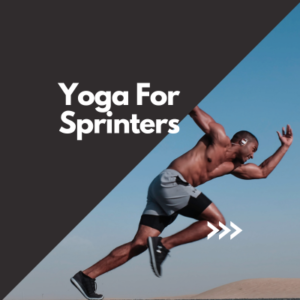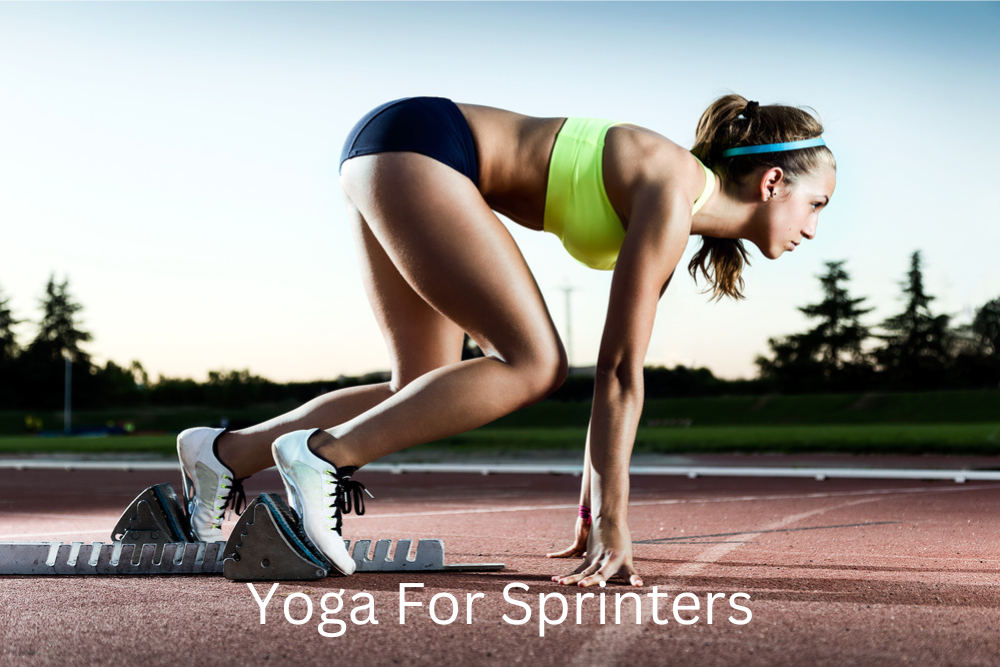For sprinters, speed is paramount, though this explosive power doesn’t come from speed alone; it also requires flexibility, balance, and agility. While sprinter training regimens traditionally focus on strength and cardiovascular conditioning, incorporating yoga for sprinters can offer additional benefits that significantly enhance performance. Let’s explore how yoga can help sprinters boost their speed and agility.
Yoga: The Secret Ingredient for Sprinting Success
Sprinters need robust lower body strength, explosive power, and swift muscle recovery. With its combination of static holds, dynamic movements, and deep breathing, yoga can help enhance all these aspects. It promotes flexibility, aiding in stride length and efficiency, and it improves balance and stability, critical components of a powerful start and steady sprint. Yoga also fosters mind-body awareness, crucial for maintaining form during high-speed runs.
Downward-Facing Dog (Adho Mukha Svanasana)
The downward-facing dog yoga pose is a wonderful stretch for the entire backside of your body, particularly the hamstrings and calves – critical muscles in sprinting. Start in a tabletop position, hands beneath shoulders, knees under hips. Tuck your toes under, push through your hands, and lift your hips towards the ceiling, then straighten your legs as much as possible, keeping your spine long. Hold for 1-3 minutes.
Warrior III (Virabhadrasana III)
Warrior lll is excellent for building lower body strength and improving balance. From standing, hinge forward at the hips, extending your right leg behind you until your body forms a ‘T’ shape, then extend your arms in front of you or to your sides. Keep your core engaged and your gaze focused on one point. Hold for 30 seconds to 1 minute, then switch sides.
High Lunge (Utthita Ashwa Sanchalanasana)
High lunge targets the hip flexors, a muscle group that can limit stride length if tight. Start in Downward-Facing Dog, then move your right foot between your hands. Keep your right knee over your right ankle and lift your upper body, reaching your arms overhead, but maintain a solid back leg. Hold for 1 minute, then switch sides.
Crescent Lunge Twist (Parivrtta Anjaneyasana)
This pose provides a deep stretch for the hip flexors while improving spinal mobility and balance. From High Lunge, with your right foot forward, bring your hands together at the heart center. Twist your upper body to the right, hooking your left elbow outside your right knee. Look towards the ceiling. Hold for 30 seconds, then switch sides.
Chair Pose (Utkatasana)
Chair pose is a powerful strength-builder for the quads, hamstrings, and glutes. Stand tall, feet hip-width apart. Bend your knees as if sitting in a chair, keeping your thighs as parallel to the floor as possible. Reach your arms overhead, keeping your shoulders relaxed. Hold for 30 seconds to 1 minute.
Garland Pose (Malasana)
Garland pose is an effective stretch for the ankles, groins, and back, which can support a more efficient sprinting form. Start standing with feet wider than hip-width apart. Bend your knees, lowering your hips into a deep squat. Bring your hands together at the heart center, pressing your elbows against your knees. Hold for 1-2 minutes.
Essential Tips for Sprinters Practicing Yoga
- Balance Strength with Flexibility: Sprinters need power and flexibility for optimal performance. In your yoga practice, incorporate poses that build strength, such as Warrior III and Chair Pose, along with stretches like Downward-Facing Dog and High Lunge.
- Prioritize Recovery: Sprinting can be hard on your body. Poses that promote relaxation and facilitate recovery, such as Legs-Up-The-Wall (Viparita Karani) or Corpse Pose (Savasana), can be beneficial additions to your routine.
- Consistency is Key: Consistent practice yields the best results, like any training. Try incorporating yoga into your routine 2-3 times per week, varying between strength-building and flexibility-enhancing sessions.
- Listen to Your Body: Everybody is different, and what works for one person may not work for another. Pay attention to how your body responds to various poses, and change or skip any that cause discomfort or pain.
- Use Yoga for Mental Strength: Sprinters require a strong mind as well as a strong body. Yoga builds mental resilience and focuses the mind under pressure.
Conclusion
Including yoga in your training program can yield substantial benefits if you’re an elite sprinter or recreational runner looking to improve your speed. It’s not just about improving flexibility; it’s about improving balance, boosting strength, promoting recovery, and improving our mental focus.
The yoga poses outlined in this article can be particularly beneficial for sprinters, as they target key muscle groups relevant to sprinting. Remember that the most effective yoga routine is a routine that benefits your needs and goals. Don’t be afraid to experiment with different poses; always listen to your body’s feedback.
Yoga might be the secret weapon you’ve been searching for in the race toward more incredible speed and agility. It offers a helping approach to training, improving the mind-body connection, and helping you to unlock your full sprinting potential. So, why not roll out a mat and give it a try? Your speedier, more agile future self will thank you.

